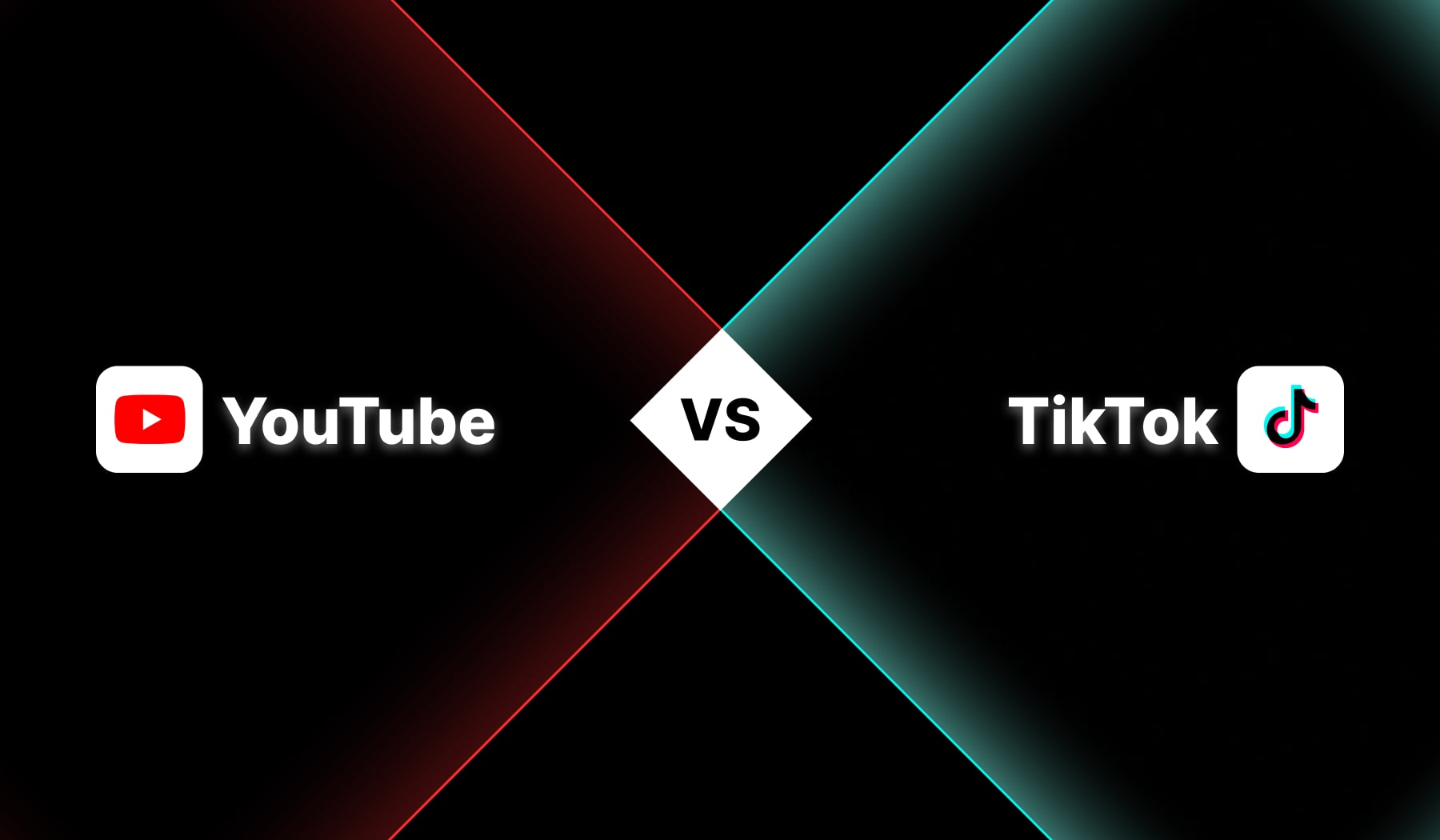You probably want to:
- Start posting content on social media
- But you’re not sure which app to being using…
- YouTube, or TikTok?
Fear not, this guide will answer every question of yours. By the end of it, you’ll know which app to use with 100% confidence.
Key Takeaways
| Category | TikTok | YouTube |
|---|---|---|
| Content Format | Short vertical videos (15 sec – 10 min). | Horizontal, supports Shorts and long-form videos. |
| Algorithm & Discovery | “For You” page, easy for new creators to go viral. | Based on subs, history, and SEO tags. |
| Audience Engagement | Quick interactions, trends, and challenges. | In-depth comments, community posts, longer engagement. |
| Monetization | Limited options: Creator Fund, brand deals. | Ad revenue, memberships, diverse income options. |
| Video Editing | In-app tools with effects and music. | Basic in-app; most use external software. |
| User Demographics | Younger audience, mostly Gen Z. | Broad age range and niches. |
| Search & Discovery | Trend-based, limited search capabilities. | Advanced search with SEO impact. |
| Content Lifecycle | Short lifespan, peaks and fades quickly. | Longer lifespan, esp. for evergreen topics. |
The Basics: TikTok & YouTube
YouTube is a video-sharing platform for longer content like tutorials, vlogs, and entertainment.
TikTok focuses on short, trending videos that often go viral quickly.
But let’s break this down…
1. What is YouTube Shorts?
A video-sharing platform where users upload, watch, and interact with videos, whether they’re long-form or short-form.
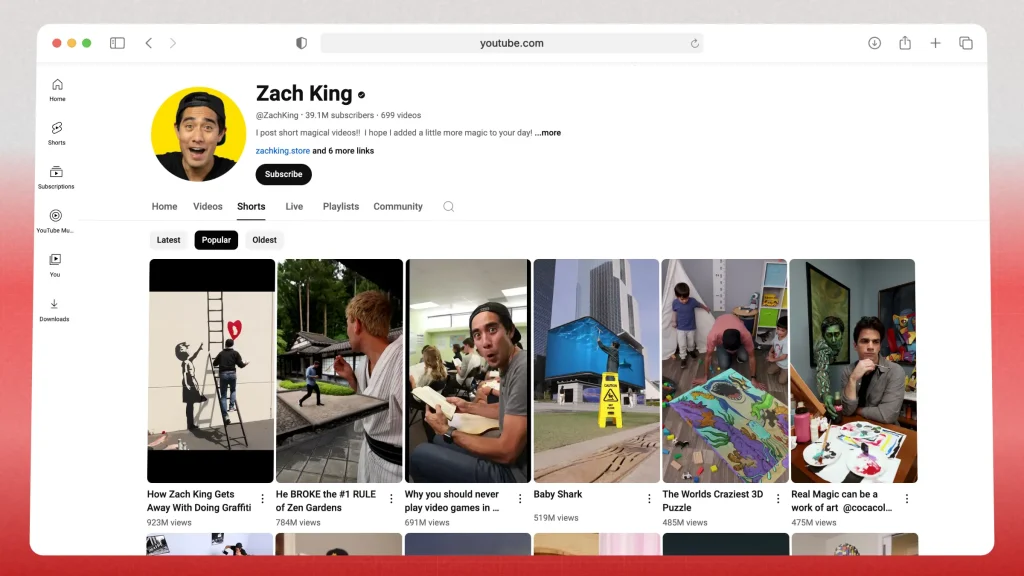
On YouTube, you’ll find:
- Content ranges from tutorials, vlogs, and music videos to educational and entertainment content.
- It’s more suitable for longer videos (over 10 minutes) but supports shorter formats like YouTube Shorts.
- Monetization options include ads, memberships, and sponsorships.

2. What is TikTok?
A short-form video platform where users create and share videos up to 10 minutes long, but most popular content is 15-60 seconds.
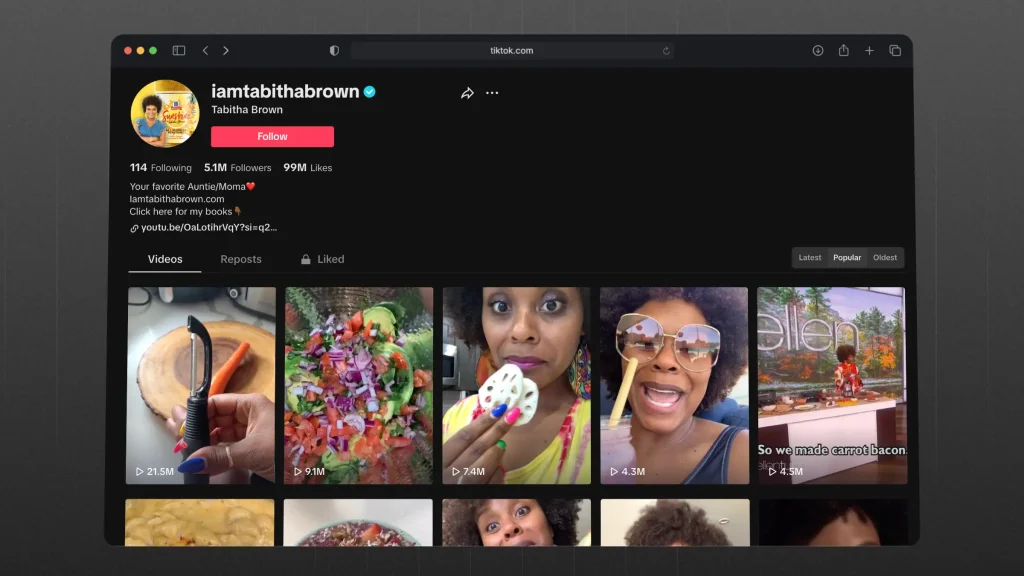
- Focused on trends, challenges, and viral content, often with music or sound effects.
- Its algorithm is strong at pushing content based on user preferences, making it easier to go viral.
Both platforms have distinct audiences and content styles, making them powerful for creators and businesses looking to reach diverse demographics.

Differences: TikTok vs YouTube
1. Content Format
TikTok and YouTube cater to different viewing experiences.
- TikTok is built around short-form, vertical videos that are designed to be quickly consumed and scrolled through.
- In contrast, YouTube is known for its versatile format, supporting both short-form content (via YouTube Shorts) and long-form, high-production videos.
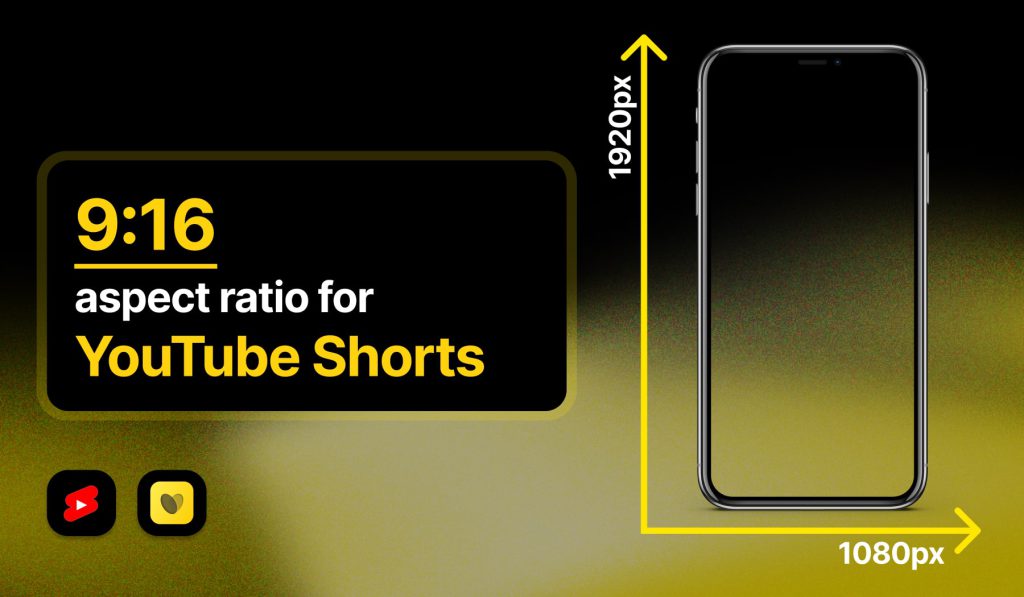
- TikTok: Short-form vertical videos (15 seconds to 10 minutes max).
- YouTube: Primarily horizontal videos with no time limit, supporting both short-form (YouTube Shorts) and long-form content.
2. Algorithm & Discovery
The algorithms on these platforms work differently to promote content. TikTok’s algorithm heavily emphasizes the “For You” page, where content from new creators can go viral regardless of follower count.
YouTube and YouTube Shorts’ algorithms, on the other hand, considers your subscriptions, watch history, and video tags, making it more challenging for new creators to get discovered without strategic optimization.
- TikTok: Highly focused on the “For You” page, making it easy to discover new creators even with no prior following.
- YouTube: Focuses on recommendations based on subscriptions, watch history, and video tags.
3. Audience Engagement
Both platforms have unique engagement models. TikTok encourages quick interactions through trends, challenges, and short comment chains, leading to a high level of virality. YouTube promotes deeper engagement through in-depth discussions, longer comment sections, and community posts.
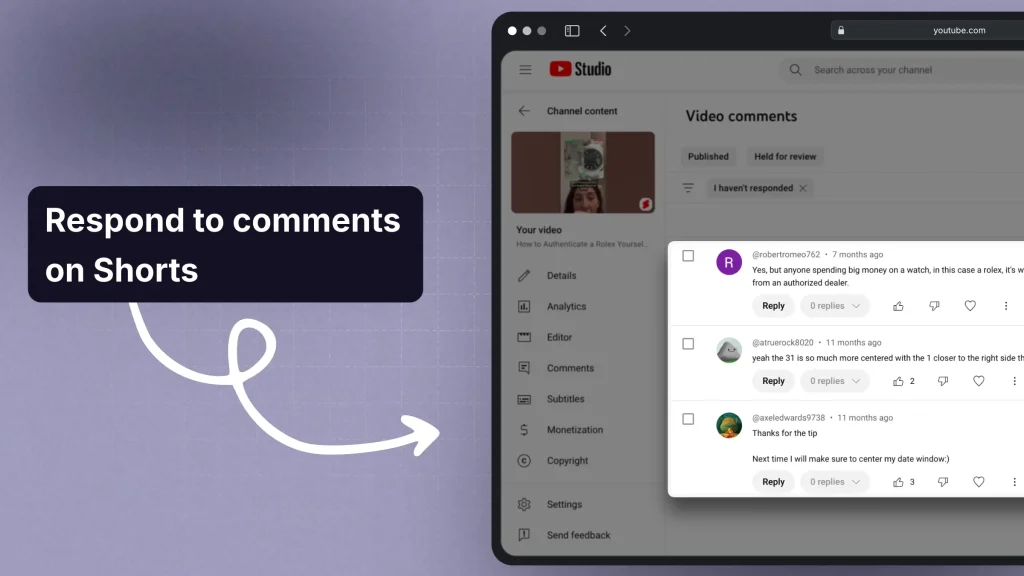
- TikTok: Quick interactions, trends, and challenges make it more engaging and viral-oriented.
- YouTube: Longer engagement with in-depth comments, community posts, and discussion-based content.
4. Monetization
Earning potential differs significantly between the platforms.
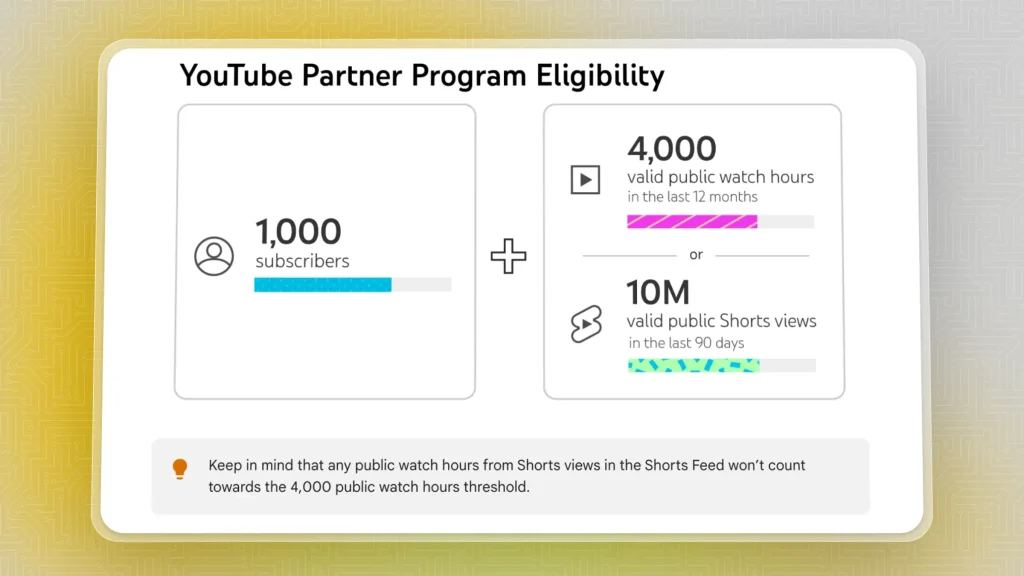
TikTok relies mainly on brand deals, the Creator Fund, and livestream gifts, which are limited in payouts. YouTube offers a more diverse range of monetization options such as ad revenue, channel memberships, and Super Chats, allowing for a more stable income stream.
- TikTok: Primarily through brand deals, TikTok Creator Fund (limited payouts), and livestream gifts.
- YouTube: Ad revenue, memberships, and more robust monetization options.
Read more: How to monetize TikToks and YouTube Shorts.
5. Video Editing
When it comes to creating content, TikTok makes it easy with its powerful in-app editing tools, effects, and music library, allowing creators to produce videos directly on their phone. YouTube, while offering some basic editing, often requires external software for creators aiming for high-quality production.
- TikTok: In-app editing tools, effects, and music library designed for quick, on-the-go creation.
- YouTube: Basic editing in the app, but most creators use external editors for high-quality production.
However, there’s even a greater option: SendShort is designed to enhance video editing for both YouTube and TikTok creators.
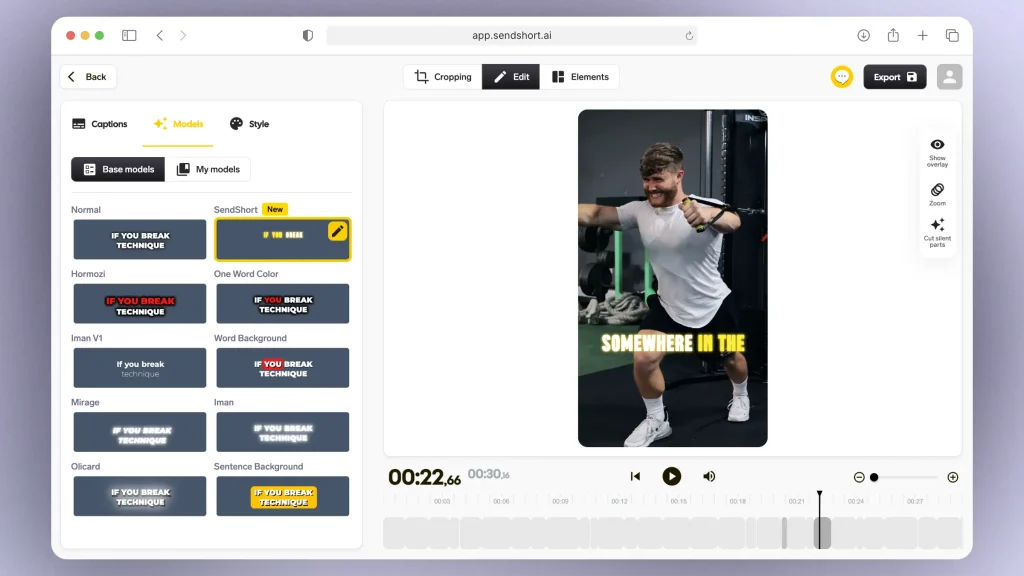
- For YouTube, it offers long-form editing tools, advanced features like text overlays, and easy export options, helping users craft engaging narratives.
- For TikTok, SendShort provides quick editing tools, subtitle capabilities, and more that allows creators to produce eye-catching, trend-aligned content rapidly.
6. User Demographics
TikTok tends to attract a younger demographic, with Gen Z being the dominant age group.
Meanwhile, YouTube covers a wider age range, appealing to all generations and accommodating various niches.
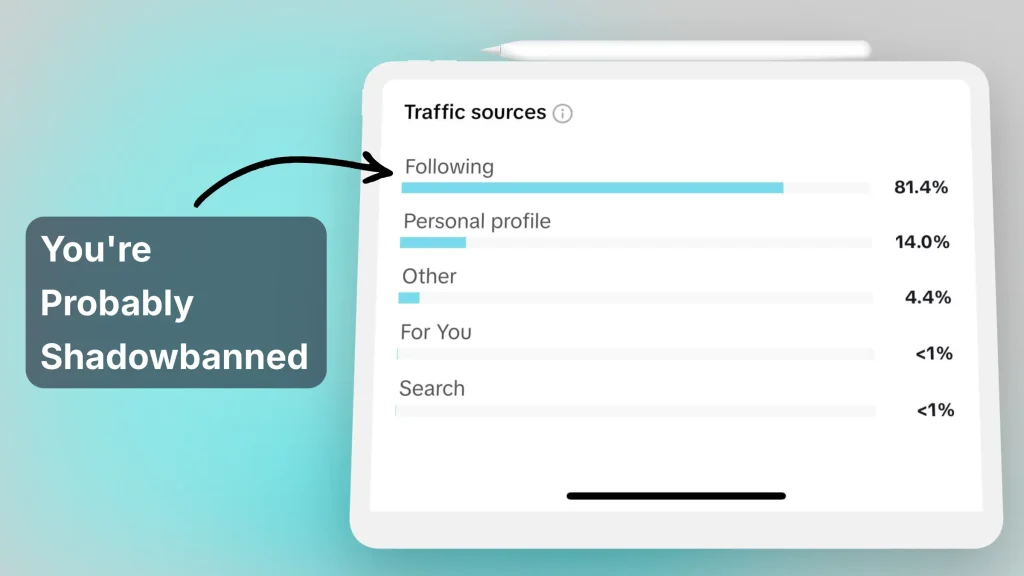
- TikTok: Younger demographic (Gen Z dominant).
- YouTube: Broader demographic, covering all age groups and niches.
7. Search & Discovery
Search functionality is another key difference. TikTok’s search is more focused on discovering trends and specific challenges, making it limited for niche queries. YouTube has a more advanced search system, where optimizing SEO plays a crucial role in video discovery.
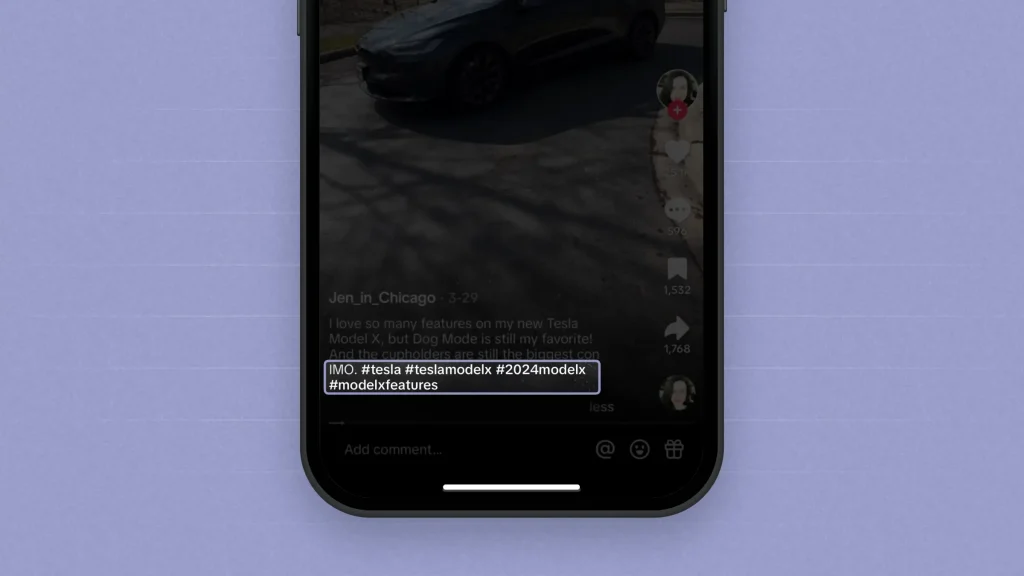
- TikTok: Focuses on trends and challenges, with a limited search functionality.
- YouTube: Advanced search capabilities, with SEO considerations for video titles, descriptions, and tags.
8. Content Lifecycle
The lifecycle of content on these platforms also varies. TikTok videos tend to peak and die out quickly due to the fast-moving nature of trends. YouTube content, especially educational or evergreen content, can continue to gain views and engagement for months or even years after its initial upload.
- TikTok: Short shelf life; videos peak quickly and can die out fast.
- YouTube: Longer content lifespan, especially for evergreen topics, tutorials, and series-based videos.
Making Money: TikTok vs YouTube
1. TikTok
TikTok has rapidly gained popularity, especially among younger audiences, making it an attractive platform for creators looking to make money. The appeal lies in the format: short, engaging videos that can go viral in a matter of hours.
- Viral Potential: Quick turnaround allows videos to reach large audiences swiftly.
- Engagement-Driven Algorithm: Content is promoted based on engagement rather than follower count, enabling newer creators to gain visibility.
- Monetization Options: Primarily through brand partnerships, sponsorships, and the TikTok Creator Fund, which compensates based on views.
- Rapid Growth: Creators can experience substantial follower growth due to the platform’s dynamic nature.
Overall, for those who thrive on quick, creative formats and enjoy staying on top of trends, TikTok offers a dynamic space for earning and connecting with audiences.
Keep Learning: How to make money on TikTok.
2. YouTube
YouTube has long been a cornerstone of online video content and monetization, offering a more established and multifaceted revenue model compared to TikTok.
- Diverse Revenue Streams: Monetization through ads, channel memberships, Super Chats, and merchandise sales, or even affiliate programs.
- YouTube Partner Program: Allows creators to earn money from ads once specific criteria (1,000 subscribers and 4,000 watch hours) are met.
- Long-Lasting Content: Videos can continue generating views and revenue long after publication, thanks to searchability and recommendations.
- Higher Engagement: Longer-form content can engage viewers deeply, fostering a loyal audience.
For those willing to invest the time and effort, YouTube provides a reliable platform for monetization, audience growth, and building a lasting brand.
Keep Learning: Monetizing YT Shorts.

The Pros & Cons
For this section, we’ve only got a short table:
| Platform | Pros | Cons |
|---|---|---|
| TikTok | – Easy discovery for new creators. – Quick, engaging format encourages virality. – Strong community trends and challenges. | – Limited monetization options. – Short content lifespan. – Less depth in content engagement. |
| YouTube | – Diverse monetization opportunities. – Longer content lifespan. – In-depth engagement with viewers. | – More challenging for new creators to gain visibility. – Requires external editing for quality content. – Slower-paced content compared to TikTok. |
These are the most genuine pros and cons.
We wouldn’t want to waste your time by repeating ourselves all over, so this is what you should keep in mind about the ups and downs of TikTok and YouTube.
How to Choose Between: YouTube vs TikTok
When choosing between YouTube and TikTok, it’s important to recognize that using both platforms can be the most effective strategy.
- YouTube is ideal for long-form videos, tutorials, and detailed storytelling, allowing you to engage viewers with in-depth content.
- On the other hand, TikTok excels at delivering quick, engaging clips that capture attention instantly and promote trends.
Each app serves unique purposes that complement one another and help maximize your content reach.
Our Take: Use both platforms, as you can appeal to a broader audience. YouTube attracts a diverse demographic, while TikTok is particularly popular among younger users. This combination enables you to reach different age groups and tailor your content to various preferences.
Additionally, each platform offers distinct engagement styles and monetization opportunities. YouTube fosters deeper connections through discussions and community engagement, while TikTok encourages quick interactions and virality. Using both allows you to diversify your content and take advantage of varied monetization strategies.
Ultimately, incorporating both YouTube and TikTok into your content plan will enhance your visibility and impact.
Create the Best YouTube and TikTok videos, with AI
To create top-performing YouTube and TikTok videos, SendShort offers AI-driven tools that simplify the process and improve video quality, so you can produce content that stands out.
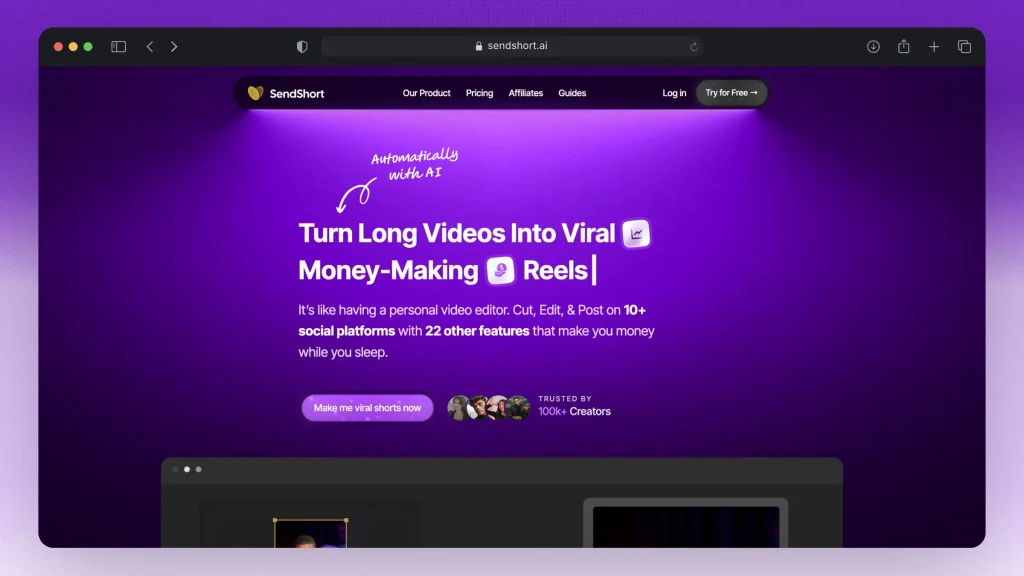
Here’s how SendShort helps create great YouTube and TikTok videos:
- Smart Video Editing: SendShort’s AI handles editing tasks like trimming and cutting, making your videos smooth and engaging with minimal effort.
- Auto-Captions and Dynamic Text: Automatically add captions and stylized text to enhance viewer engagement and ensure accessibility on both YouTube and TikTok.
- B-Roll and Visual Effects: Easily incorporate B-roll and effects that add depth and polish to your videos, keeping audiences engaged from start to finish.
SendShort’s AI tools help streamline the content creation process, letting you focus on the creative side while producing polished, attention-grabbing videos for both YouTube and TikTok.

Frequently Asked
1. Which one is better, TikTok or YouTube?
TikTok is better for quick, viral engagement and reaching younger audiences. YouTube is great for long content, diverse monetization options, and a more established platform for building a brand.
2. Should I stream on YouTube or TikTok?
Choose YouTube for longer, in-depth content and multiple monetization options, making it ideal for building a loyal audience. Opt for TikTok if you prefer quick, engaging interactions and want to capitalize on viral trends.
3. Is TikTok getting more views than YouTube?
Yes.
TikTok often generates higher engagement and views for short-form content due to its algorithm, which promotes videos based on user interaction rather than follower count. However, YouTube typically has higher overall view counts for longer videos and established channels, as its audience tends to consume content for more extended periods.
Thanks a lot for reading this,
David Ch
Head of the Editing Team at SendShort

